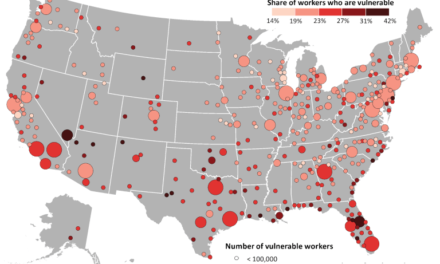It appears that Memphis police officers are nearing success in their crusade to get their 4.6% pay cut restored by Memphis City Council.
Now, with some help by the Council, perhaps, Memphis taxpayers might find success in the right-sizing of Memphis Police Department budget. In fact, it seems even more essential now if the money for restoring the pay cut is to be found.
The tawdry campaign by the Memphis Police Association reflected the worst excesses of organized labor’s tendency toward siege mentality. Its overheated rhetoric about Memphis being unsafe has eroded the officers’ professional standing and no one is willing to defend the Association’s infamous billboards outside of its rank and file.
As a result, for months, Association members have not looked so much like dedicated public servants as a special interest group pursuing a win at all costs attitude. All of the talk about how unsafe Memphis has only made us wonder: if they are right, aren’t they admitting that they have been unsuccessful in their jobs?
Then again, with so many Memphis police officers living outside of the city limits, perhaps it’s easy to lob grenades into the public square rather than present a factual basis for their point of view.
Out of Control
But all of this is merely theater. The most serious challenge facing City of Memphis isn’t management-labor relations with the Police Association. Rather, it is the need for city government to take control of a police budget that is by almost any definition out of control.
Because all city services have been sacrificed on the altar of public safety, they are languishing while the police payroll and budget continue to swell. In the past five years, the number of workers in City of Memphis has remained at 6,200, but what’s really happening under that number is seen in the fact that in that period of time, Memphis Police Department has added roughly 400 people, meaning that the rest of city government has lost that same amount.
Today, public safety – Memphis Police Department and Memphis Fire Department – accounts for 60% of the City of Memphis budget (to the fire division’s credit, it has reduced its workforce by 45 people while MPD added 400). In Nashville, public safety accounts for about 40% of its budget and its reductions in violent and property crimes surpassed Memphis from 2006-2010. The same is true in Atlanta, where violent crime dropped 24% while public safety amounted to about half of its budget.
Drops in Crime
Meanwhile, here, the city property tax rate dropped in that same period of time from $3.43 to $3.11, placing even more stress on the budgets of Memphis’ non-public safety services. That stress continues in the Wharton Administration’s 2014 budget proposal which has an increase of 54 people and $4.5 million, bringing the net expenditures in the proposed police budget to $237.6 million even as other services limp along. The proposed budget for 2014 is $48.1 million more than the 2008 budget.
New York Times editorialized Saturday that Mayor Michael Bloomberg’s “stop and frisk” policy can’t be given credit for the Big Apple’s historically low crime rates because there have been major drops in crime in most U.S. cities. The same can be said for Memphis, where drops in the crime rate are just slightly better than the average for the 50 largest cities in the U.S.
That’s not to say that we shouldn’t all be grateful for the policies and police work that contributed to Memphis’ crime drop and thrilled by declines in crime rates for both violent or property crimes, but it’s not to say that we should ignore the fact that similar drops were taking place across the country.
Stubborn
Today’s crime rate in the U.S. is roughly half what it was just two decades ago. In 2006 to 2010 alone, the violent crime rate for the 50 largest cities dropped approximately 16% while the Memphis crime rate fell roughly 19% (population here dropped 5%). It’s the drop in property crime rate that really distinguishes Memphis, where it fell 22% compared to the average for the top 50 cities of 12%.
Despite crime rate reductions in recent years, Memphis ranks #2 in overall crime rate, but it’s the violent crime rate that is the toughest challenge. The violent crime rate in 2011 was 1583.5 and in 1986, it was 1,586.8. As The Economist wrote in an article about America’s safer streets: “Moreover, the good news hardly extends to every corner of the country. Violent crime remains extremely high in some troubled cities such as Memphis and Detroit, and in small places like Oakland, California, and Camden, New Jersey.”
It will take years of research to understand what’s caused the national nature of the reductions in crime, and already, there is vigorous debate about the reasons, which include increased incarceration, improved law enforcement strategies (particularly using technology), the public’s use of technology, the waning of the crack cocaine epidemic, graying of America, and even abortion.
Perhaps, as much as anything, crime is a young man’s game, and Memphis continues to have a bulge in youths at a time when other cities are seeing decreases in their population under 18 years of age. For most offenses, arrests peak in the late teen years and early twenties, generally tapering off thereafter, but all in all, it makes the case for how Memphis’ anomalous percentage in youths presents either Memphis’ greatest opportunity or greatest obstacle to the future.
But, one fact is indisputable: there is no correlation between the size of a city’s police force and its crime rate. If we’ve proven anything in Memphis, it is this. Despite a much larger police force and a significantly larger crime-fighting budget, Memphis’ crime rates remain stubbornly high, and because most cities’ crime rates are dropping, Memphis is running in place at the top of the major cities’ crime rate rankings. In fact, some cities have actually reduced the size of its police department and its crime rate dropped as much as twice as much as Memphis.
The Cost of Full Service
What all of this means to us is that we can’t keep doing the same and expecting different results. Rather than continuing to plow more and more money into police budgets, it seems an appropriate time to broaden our attack on crime to include more interventions and prevention strategies.
That seems to be the secret to New York City’s success. It has achieved record low crime rates while reducing the size of its police force. Instead of adding more police, the Bloomberg Administration has focused on interventions.
Regardless, City of Memphis is paying a premium for a “full service” police department and for a department without the technology that can reduce costs and increase efficiency.
Memphis Police Director Toney Armstrong told Leadership Memphis recently that roughly 30% of calls to MPD are unrelated to public safety. There are calls about dogs barking and about yards rolled with toilet paper, there are calls asking for a police officer to check locks, and there are hundreds more. Because a police car responds to every call, MPD is much larger than it needs to be if it were concentrating strictly on public safety calls.
Efficiency Needed
In addition, because MPD has not kept pace with technology, it also does not operate at maximum efficiency. For example, Mr. Armstrong said that because police cars do not have GPS on them, dispatchers have to poll cars to see which ones are nearest to the location of a crime. He points out that dispatchers have sent police cars from Frayser to answer a call downtown near the Shelby County Jail because they were unaware that there was a police car there dropping off a prisoner.
With GPS, dispatchers would know where every car in Memphis at all times. It’s more than passing strange that MATA dispatchers use GPS to keep track of every bus is in Memphis, but the same can’t be said for patrol cars.
In addition, Mr. Armstrong said that because of antiquated technology, there are needless duplications in taking and following up citizen calls that increase costs and reduce efficiency.
Rather than more money for more people, MPD could make better use of funds to upgrade its technology which ultimately could help to accomplish what needs to be done: to right size the city’s police budget.
Postscript
In budget hearings this morning, Memphis City Council today raised the question of reducing the police budget so that other starving city services can receive much-needed funding. It’s hard for the legislative members to raise questions about the budget without being accused of being soft on crime, but to bring balance to the City of Memphis budget, the first step is to address the police budget.
Director Armstrong unfortunately took the position in this morning’s budget hearing that the size of the force cannot be reduced without having an impact on public safety. It puts the Council in a difficult political position, but hopefully, there is enough momentum to take a clear-eyed look at what a balanced crime-fighting plan look like, one that acknowledges that there is more to reducing crime than simply hiring more and more policemen.






The Commercial Appeal reported Wharton’s proposed operating budget for next fiscal year (beginning July 1st). Some members of the City Council said the tax rate to fund the budget was too high.
The following, as reported by CA, is one way of looking at Wharton’s tax rate:
Total increase from current $3.11 to $3.39 – an increase of 28 cents.
To raise the same revenue as current year would require an increase to $3.25 – an increase of 14 cents.
Wharton would increase the debt service from 71 cents to 84 cents – an increase of 13 cents.
That leaves a 1 cent increase, which amounts to a little over $1.5 million, to cover other increases in budget.
Presumably the 13 cents for debt service are for important construction projects that will add economic and/or social value to the City. So reducing the police budget may be the way to go if it can be done with logical salary increases; but will we keep the crime fighters or the crime preventers?
It is difficult to see how reducing the police budget would free up much money for other City services. What a dilemma.
There are ways to reduce MPD’s budget by 15%-20% and if we didn’t tell anybody, no one would ever notice. It’s about getting rid of the non-public safety calls and ending traffic accident reports that don’t involve injuries.